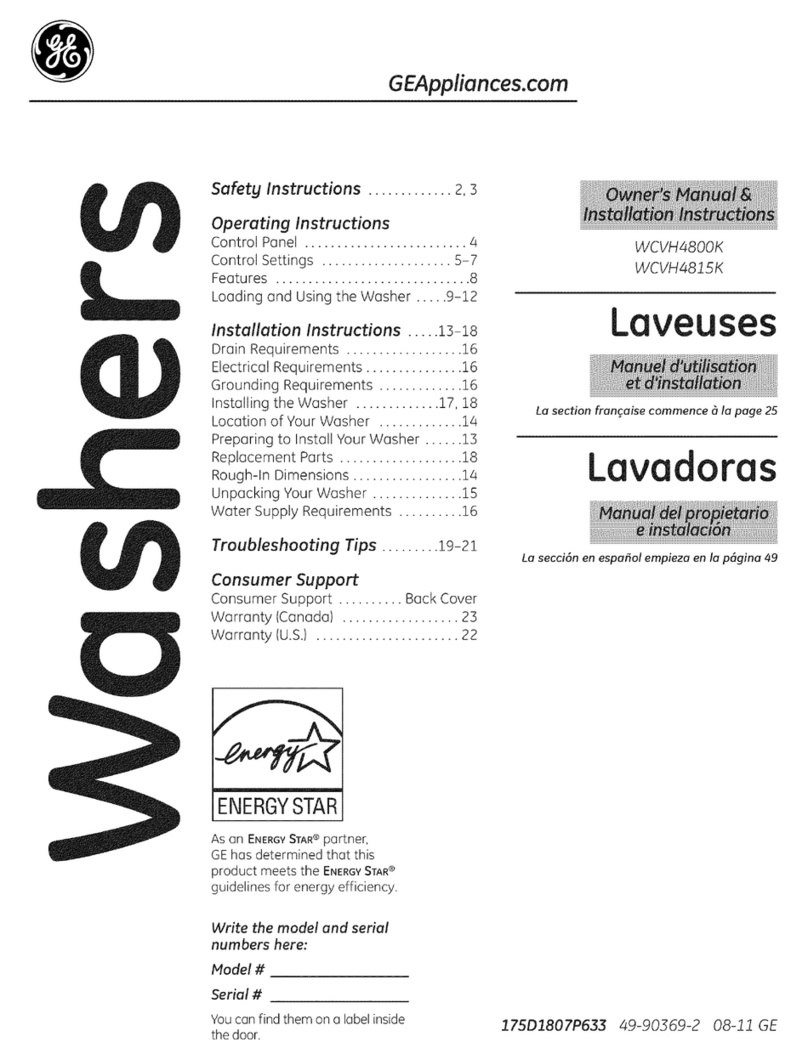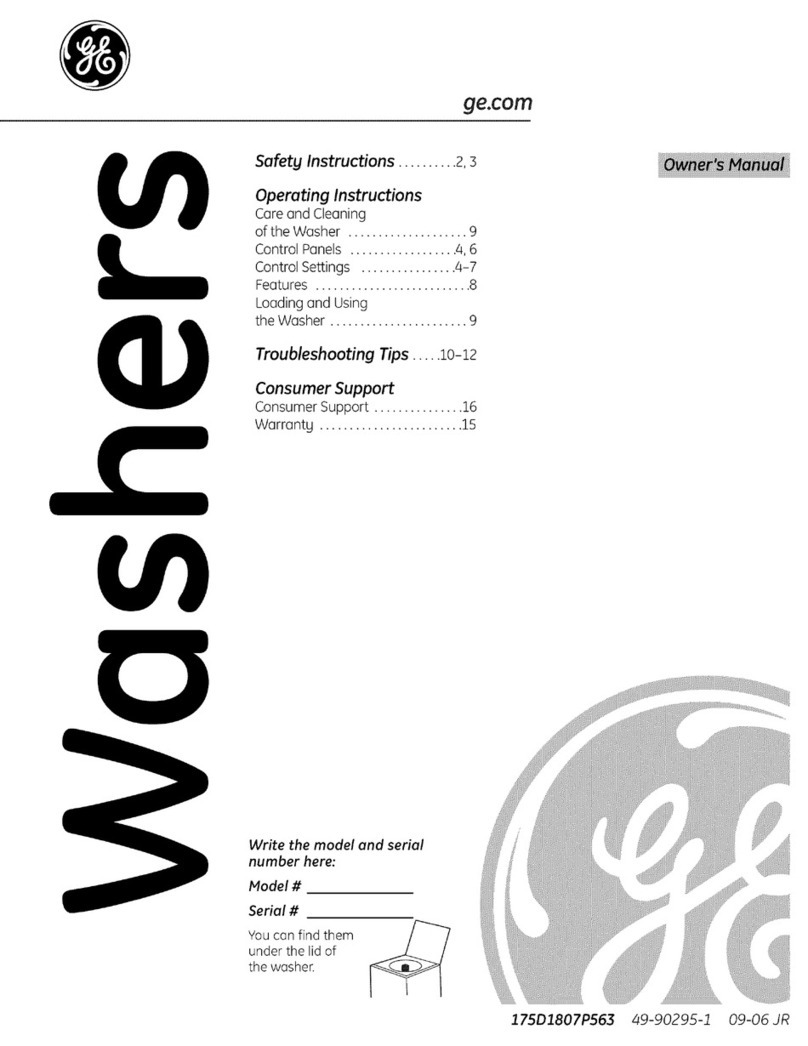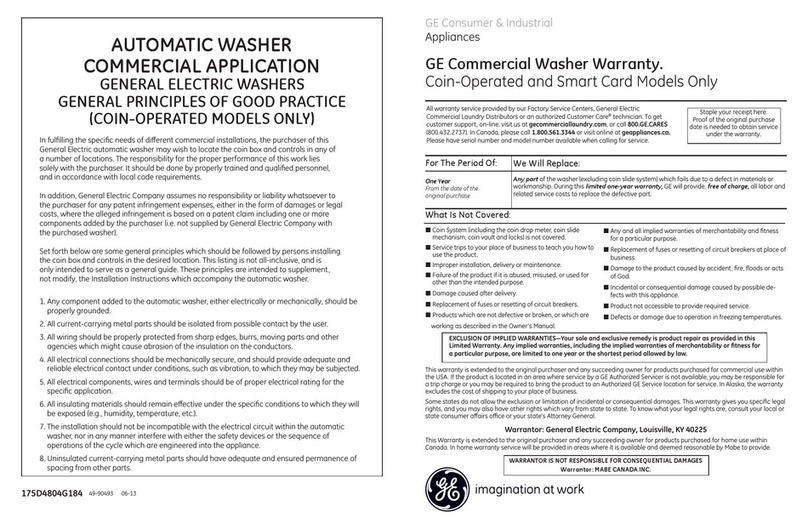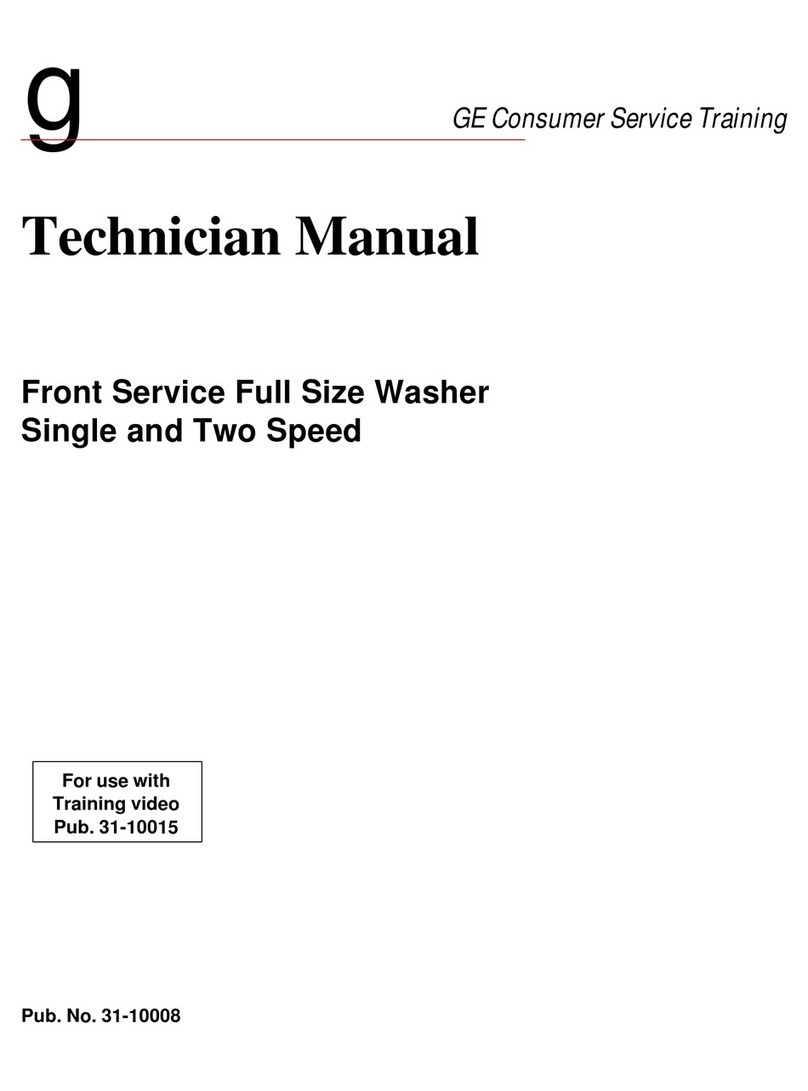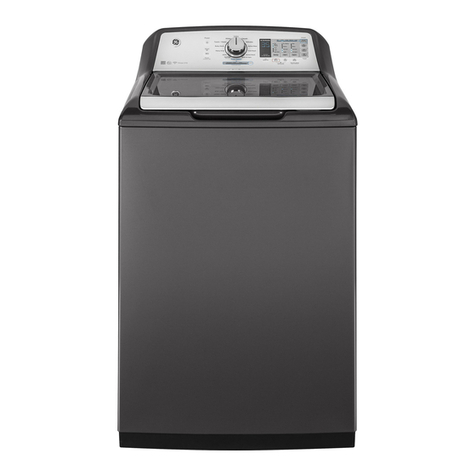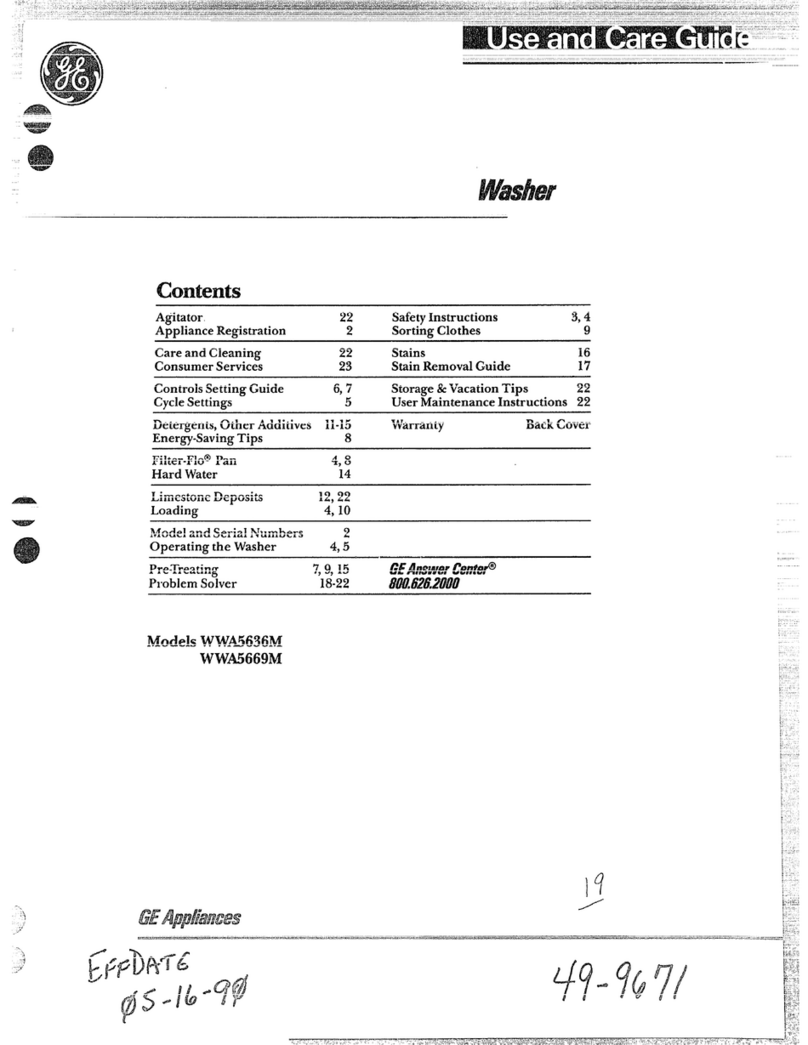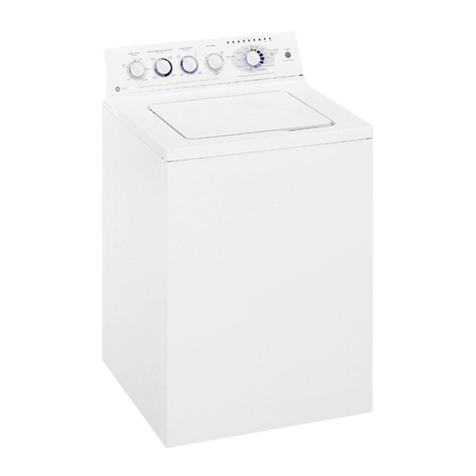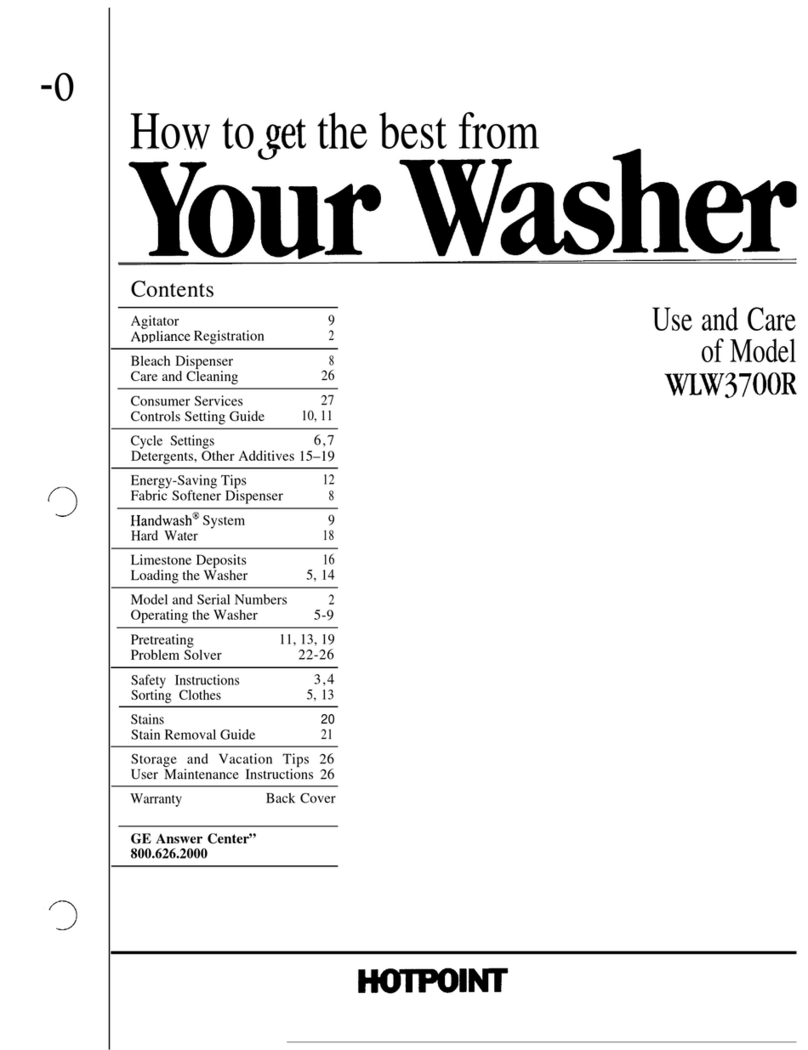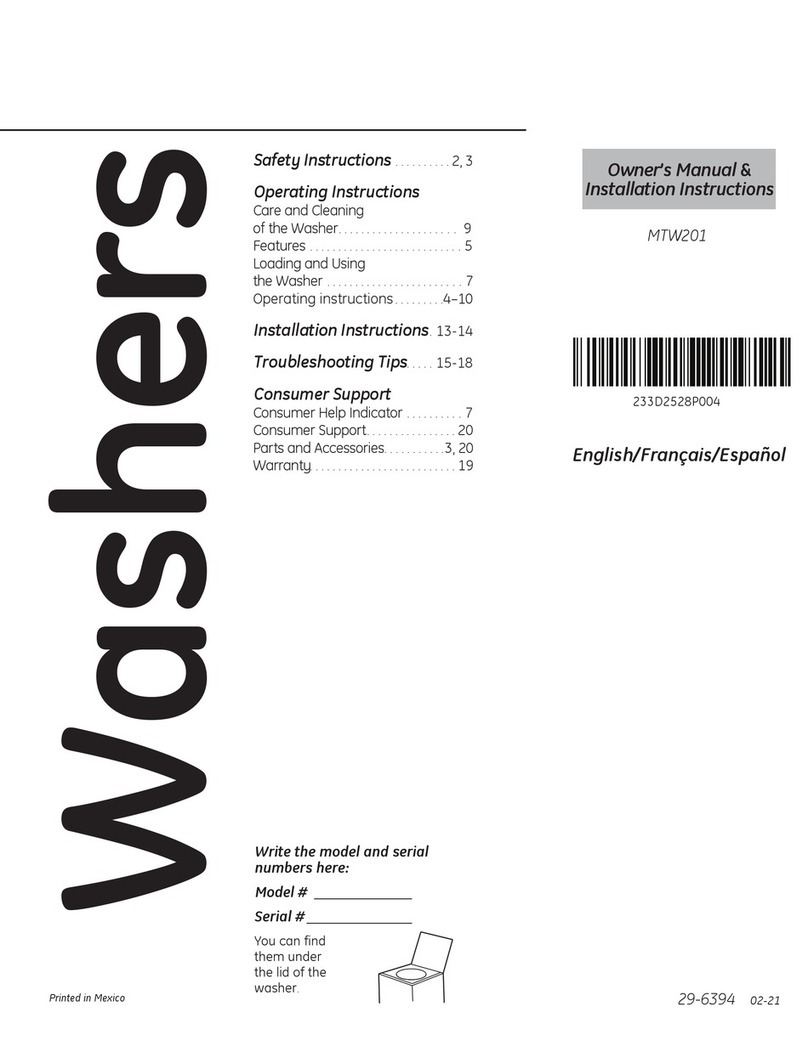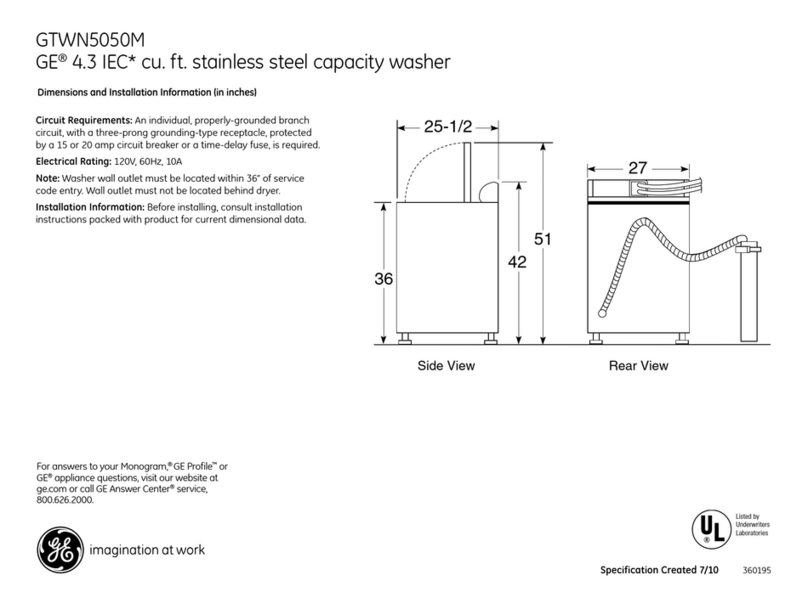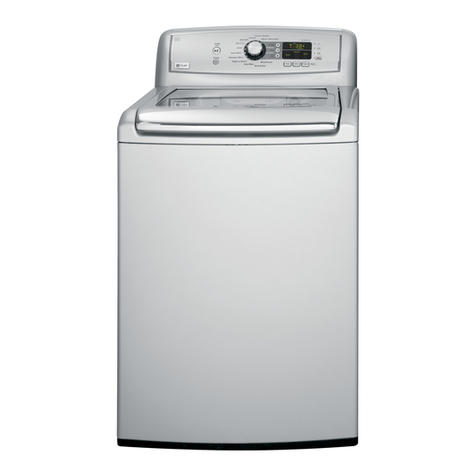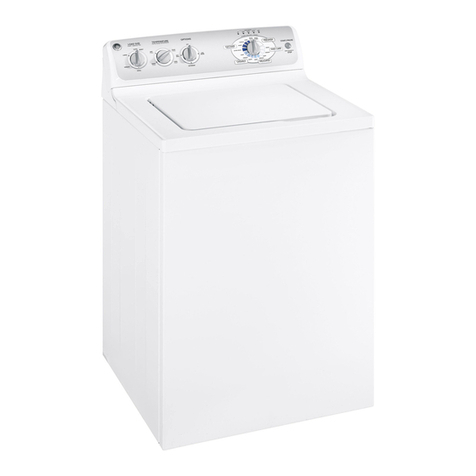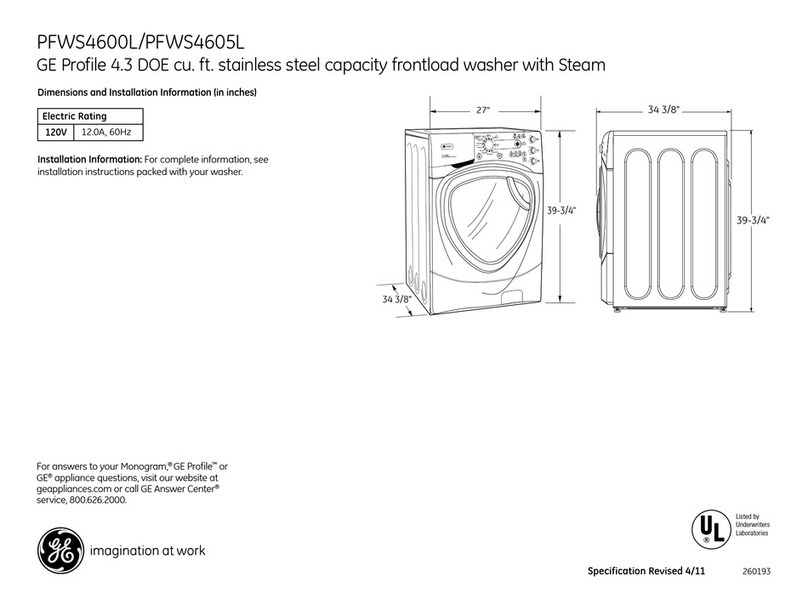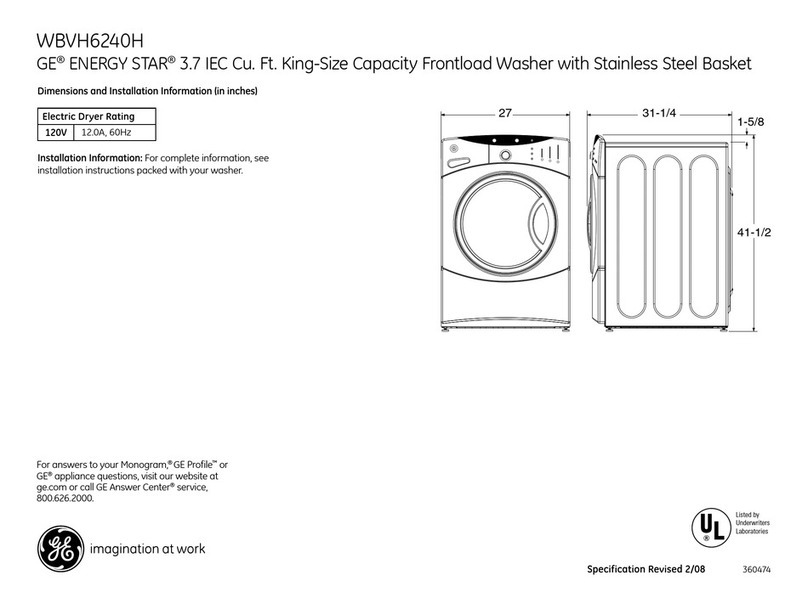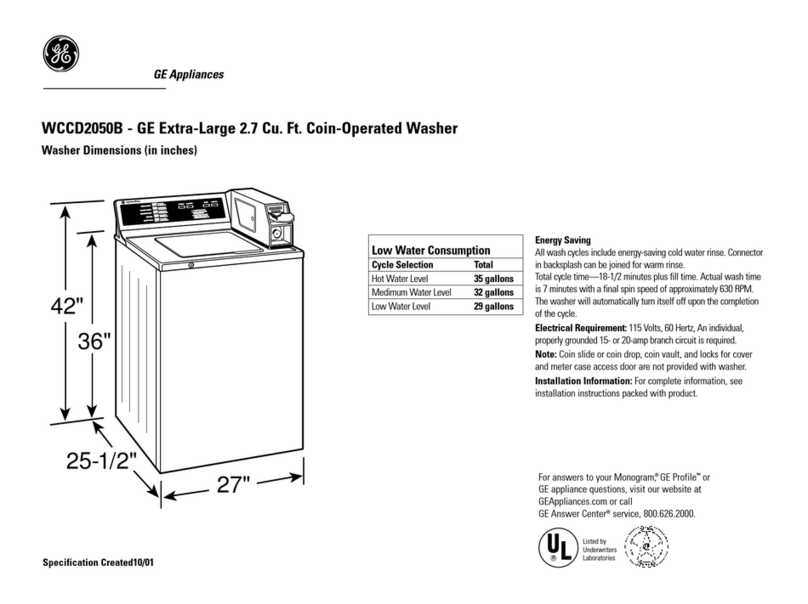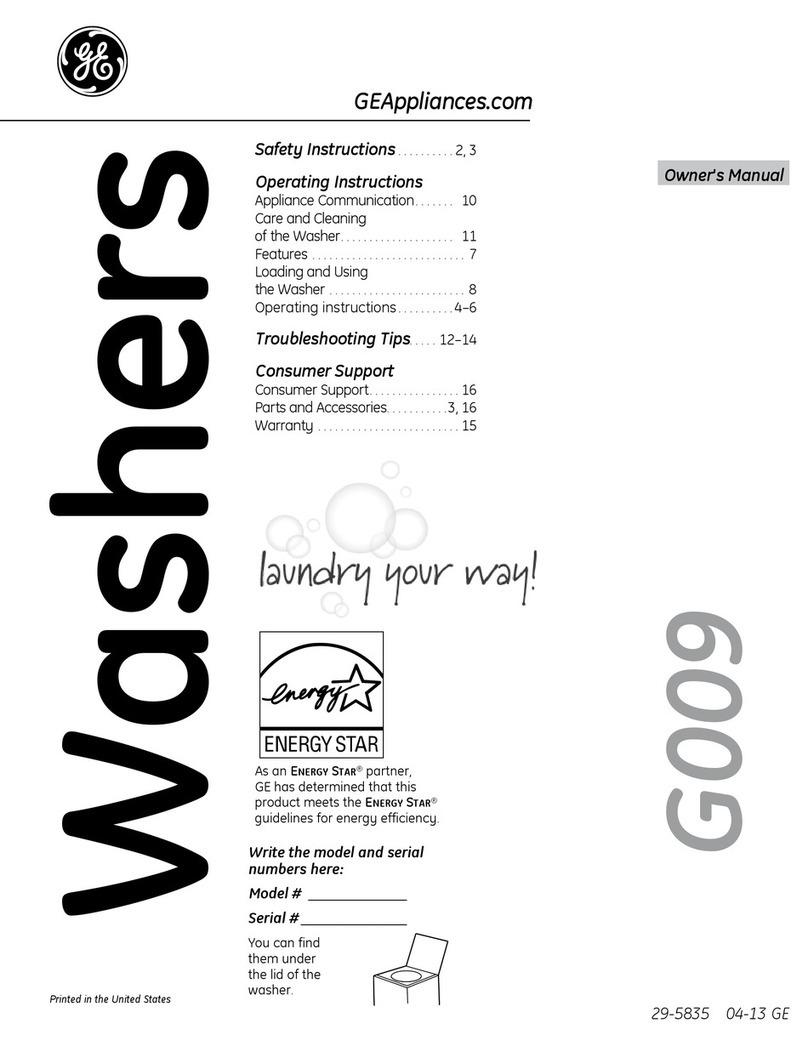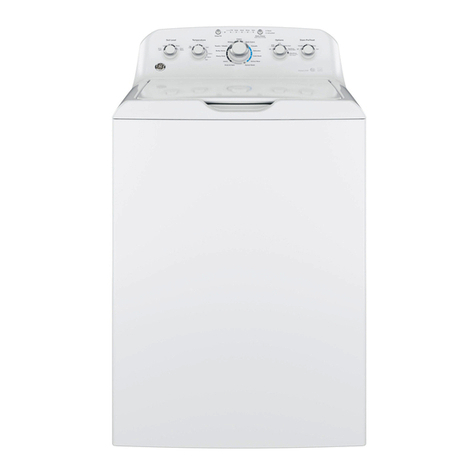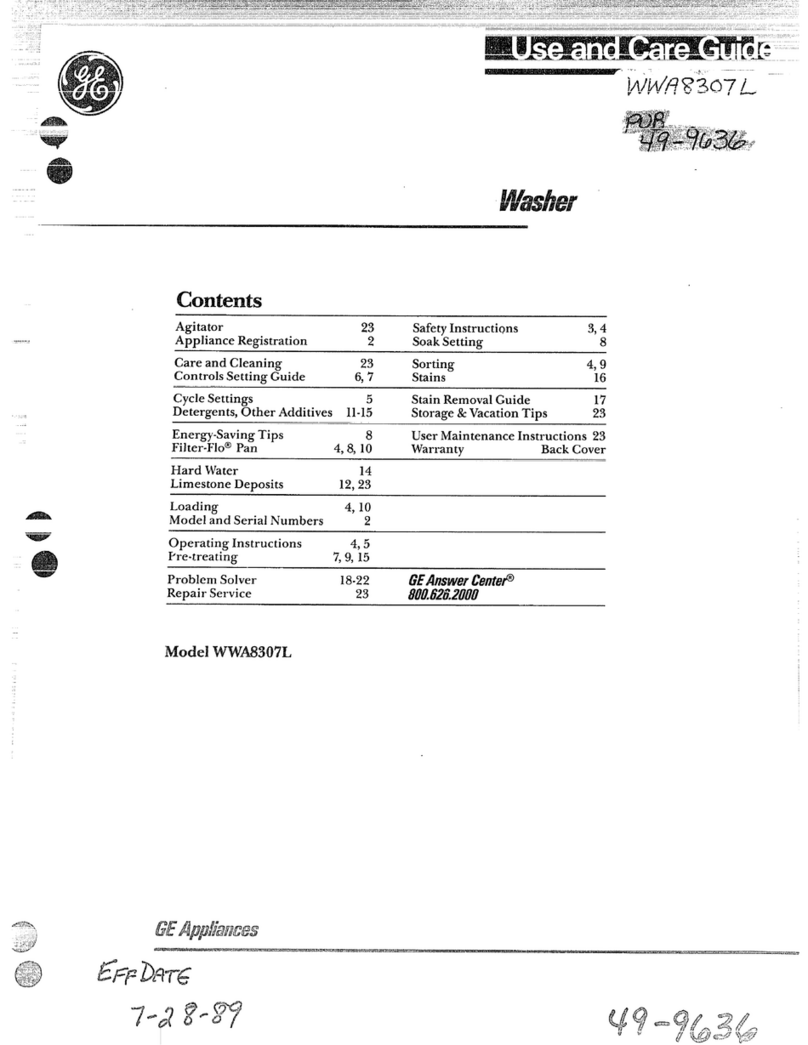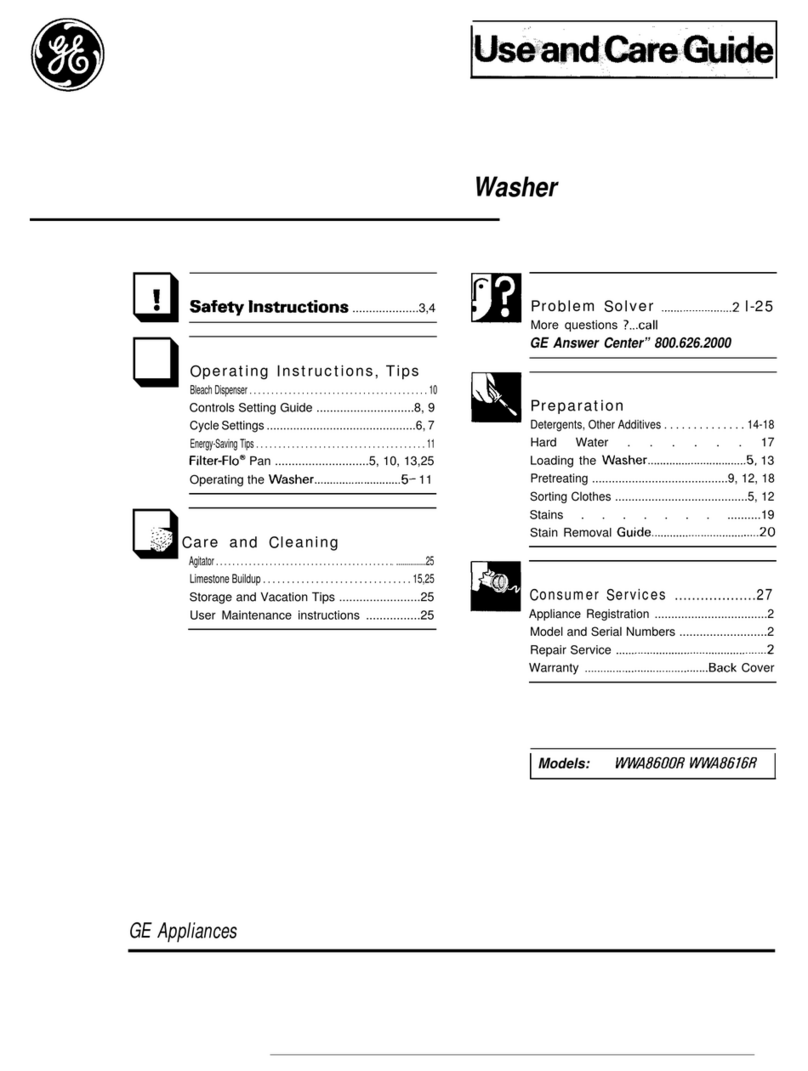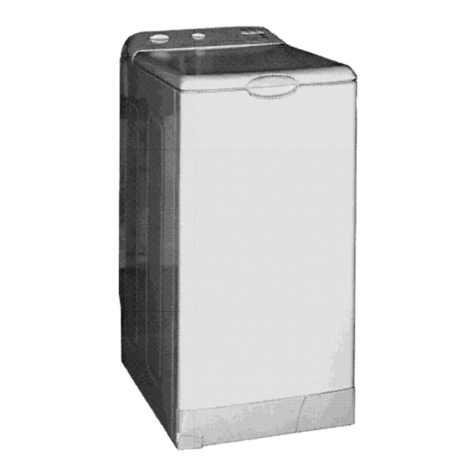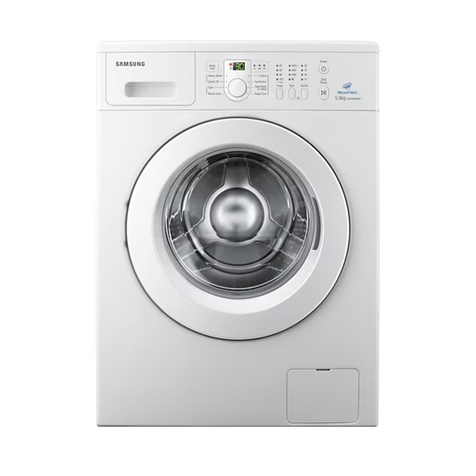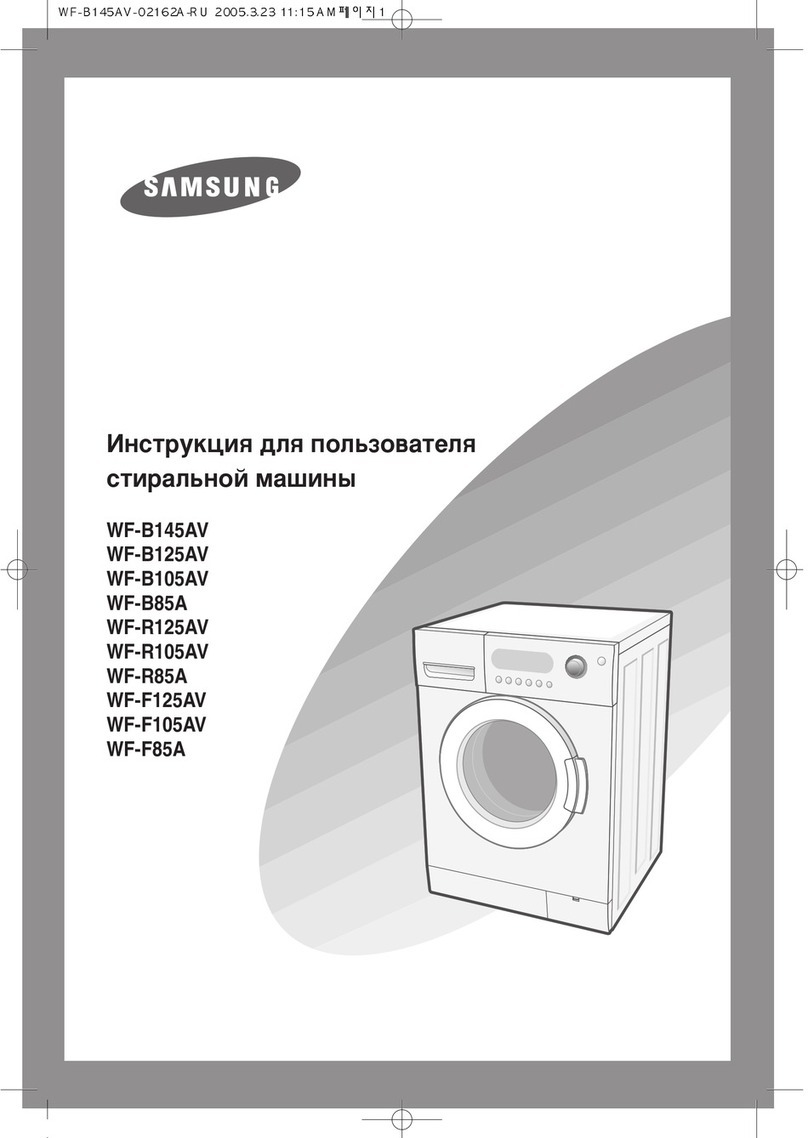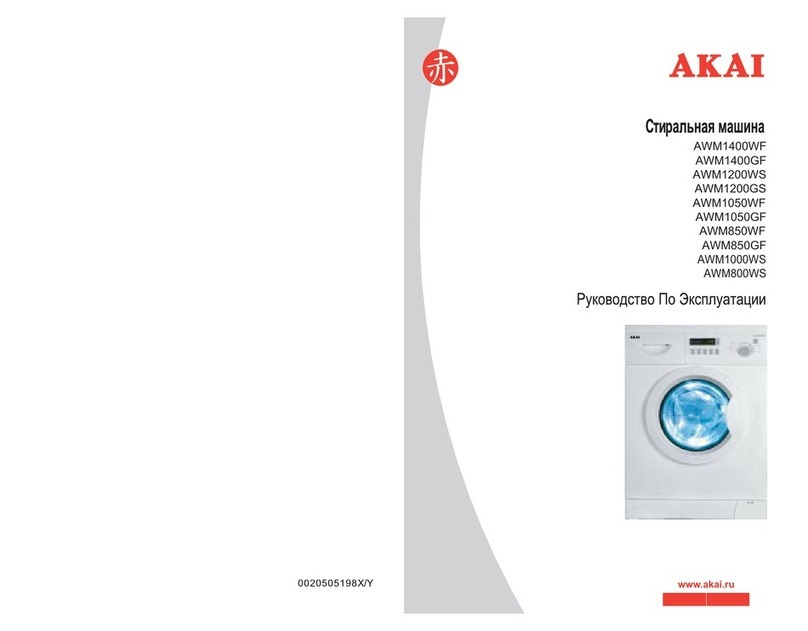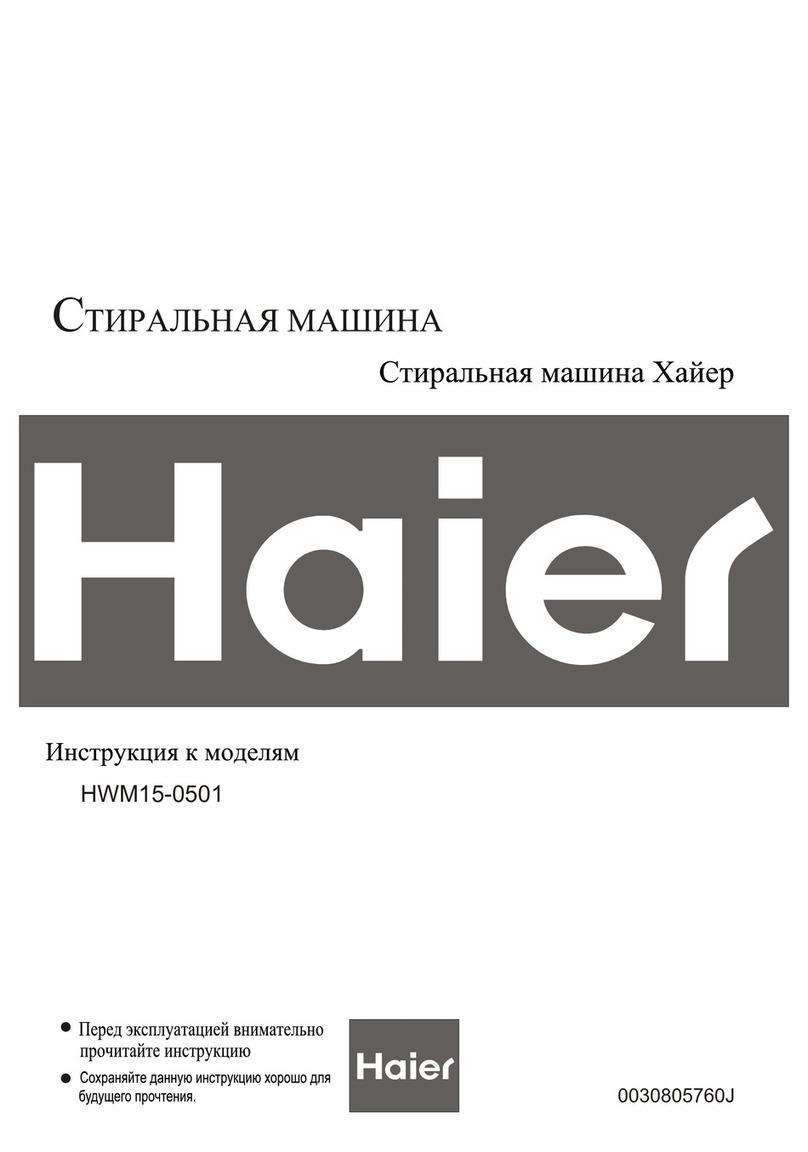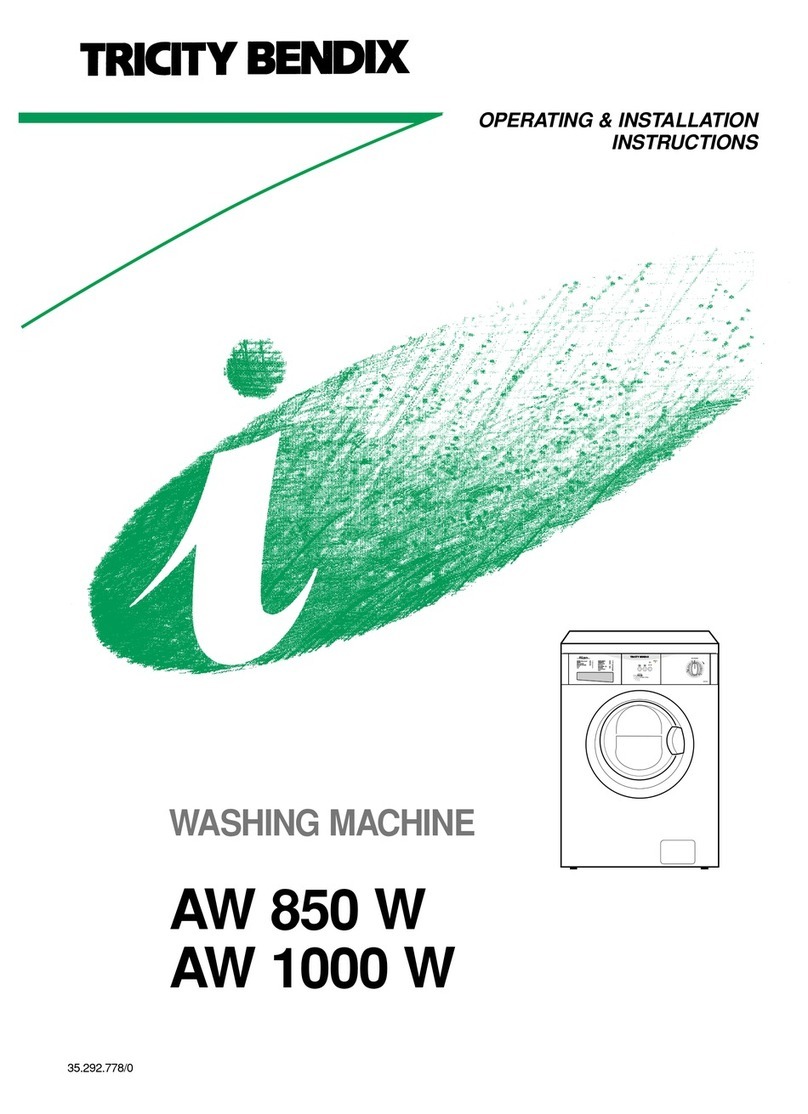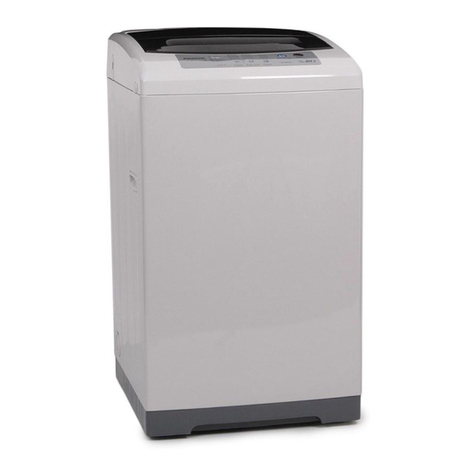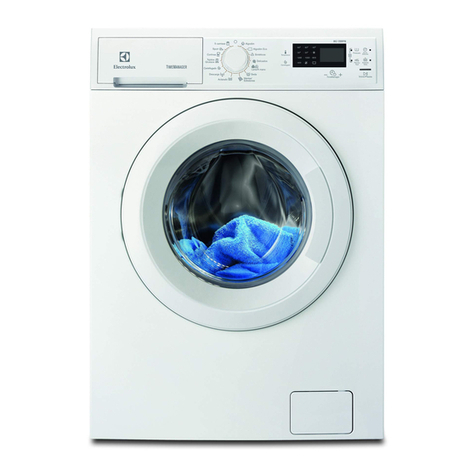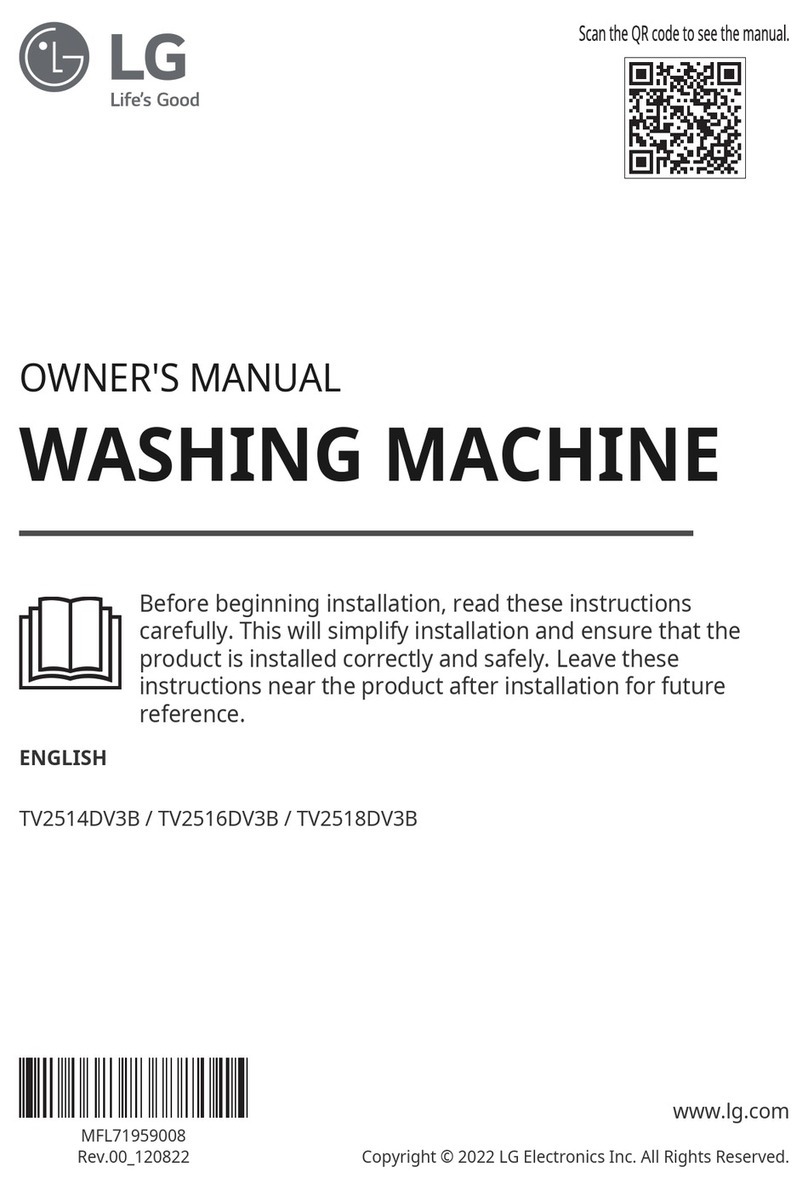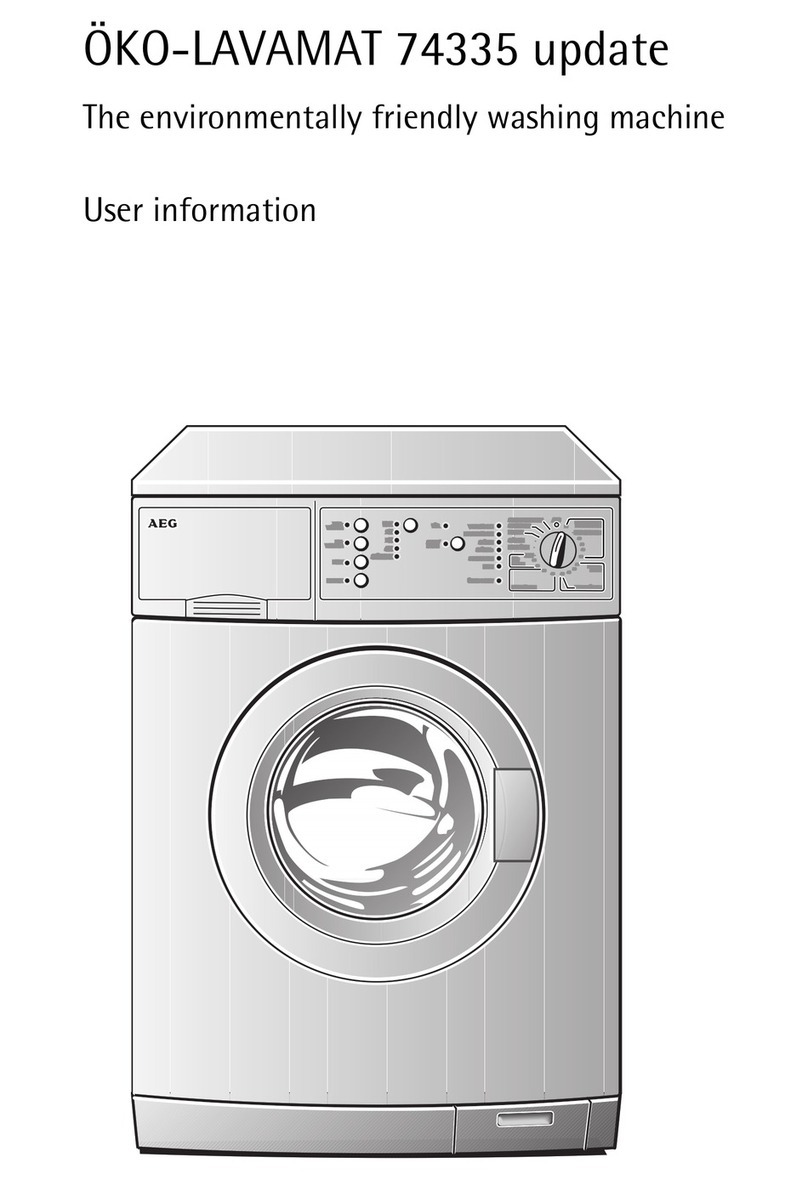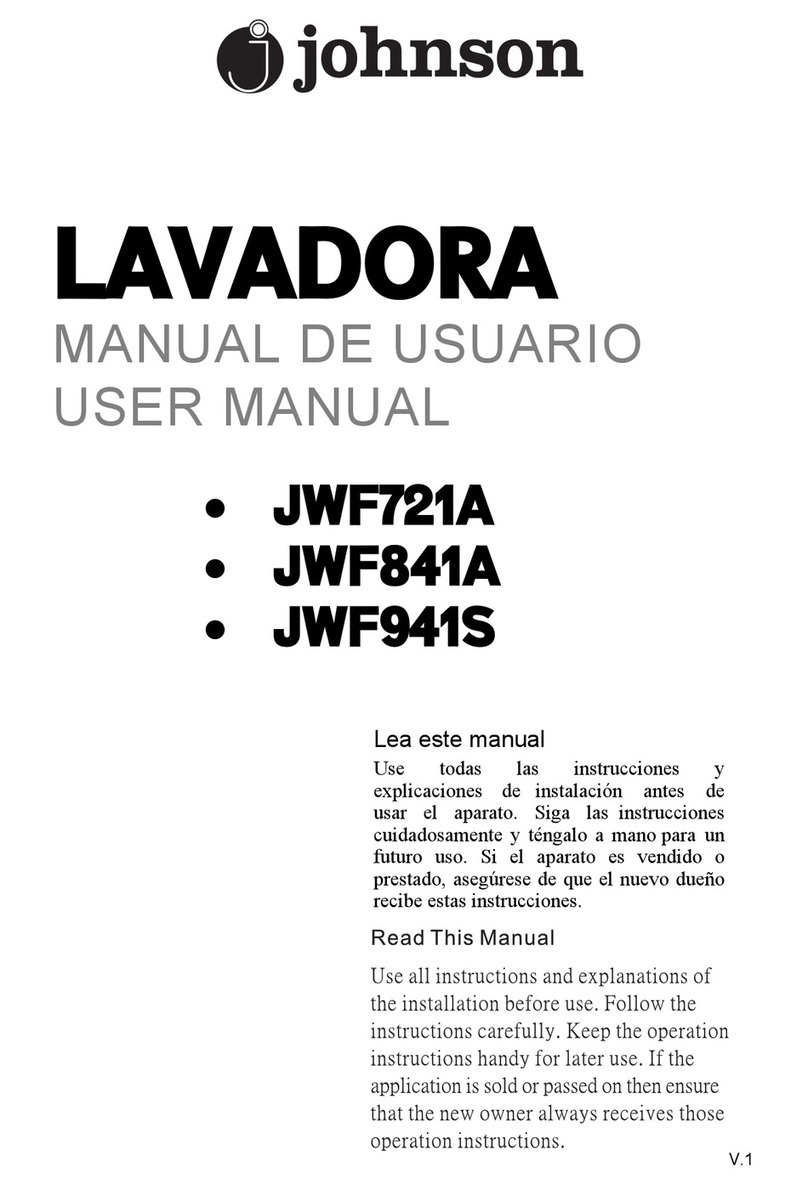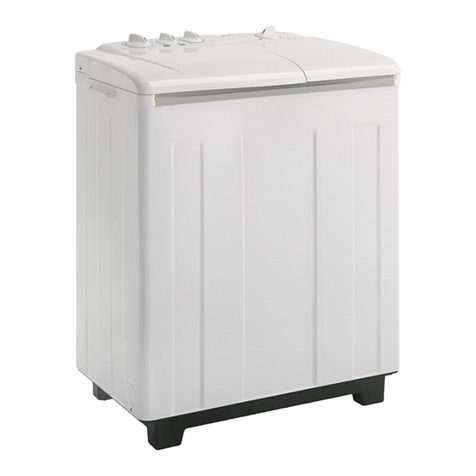
49-3000258 Rev 2 7
USING THE WASHER
Getting started
D
E
Start/Pause
Loosely load items in the washer basket. Overloading may negatively impact wash performance.
Add detergent and if desired fabric softener to the dispenser.
Press START to begin the cycle. NOTE: When the lid is closed, it will lock only during the load sensing portion of the cycle
and during spin portions of the cycle. It will unlock after load sensing and spin.
Pressing PAUSE will unlock the lid (if locked at that time), pause the cycle and the PAUSE indicator light will blink. To
continue the cycle, press STARTagain.
NOTE: The machine will cancel/end the session and drain when water is present and the lid is left open for an extended
duration, or if the unit is left in a paused state for an extended duration with the lid closed. If the lid is opened or the unit is
paused, the app will notify the user of the time limits to restart the machine within the same session, and will also notify the
user if their session has timed out. If the session times out, scan the QR code to begin a new session, select the cycle, and
press START.
Automatic Load Sensing
This determines the correct agitate profile, agitate duration and amount of water suited to the size and type of load placed
in the washer. The washer will not start the wash cycle or fill with water if the lid is open. When the lid is closed the machine
is able to begin filling with water in order to sense the load size.
NOTE: Automatic Load Sensing initiates a spin at the beginning of the cycle and will take as much as 3 minutes to
complete (significantly shorter for smaller loads); this is normal operation.
NOTE: This is a high efficiency washing machine. This system requires less water while providing effective cleaning action.
You may notice that the water level is lower than on your previous washer. This is normal.
Cycle Status Lights
Shows whether the washer is in the Fill,Soak,Wash, Rinse or Spin portion of the cycle.
If an out-of-balance condition is detected by the washer, the Spin light will blink during the remaining portion of the cycle
and will stay illuminated for a short time after cycle completion. When this occurs, the washer is taking actions to correct the
out-of-balance condition and complete the cycle normally. In some cases, the washer may not be able to balance the
load and spin up to full speed. In this circumstance, the app will notify the user that they must return to the machine and
redistribute their laundry. If this is not completed within the time given, the session will cancel/time out and the user must
scan the QR code and start the cycle again.
FExtra Rinse
Set this option to provide a deep rinse or when using fabric softener. This option may change other settings (e.g. Spin may
go to a higher setting) to maximize performance.
Consumer Help Indicator
Your washer is equipped with Consumer Help Indicator (CHI). CHI is our way to communicate a simple remedy for some
situations that you can perform without the need to call for service. The chart below describes the helpful lights you may
notice flashing on the display.
Spin light blinking If an out-of-balance condition is detected by the washer, the Spin light will blink during the remaining
portion of the cycle and will stay illuminated for a short time after cycle completion. When this occurs,
the washer is taking actions to correct the out-of-balance condition and complete the cycle normally.
In some cases, the washer may not be able to balance the load and spin up to full speed. In this
circumstance, the app will notify the user that they must return to the machine and redistribute their
laundry. If this is not completed within the time given, the session will cancel/time out and the user
must scan the QR code and start the cycle again.
Fill light (Water
not entering
washer)
Check your water supply. Did you forget to turn on one or both supply valves after installation or
coming back from vacation? As soon as the light starts to flash, the washer will initiate a 4 minute lock-
out period. The washer controls won’t respond/change during this time. After the 4 minutes, you can
begin your cycle again. If you try to bypass the lock-out period by unplugging the washer, the 4 minute
timer will start over again.
Lid Locked light Lid Locked light will flash if 3 cycles have been started without opening the lid. The washer will not
start another cycle until the lid is opened. Try opening, then closing the lid and starting a new cycle. If
the problem persists, call GE Appliances at 800.GE.CARES (800.432.2737) for service.
